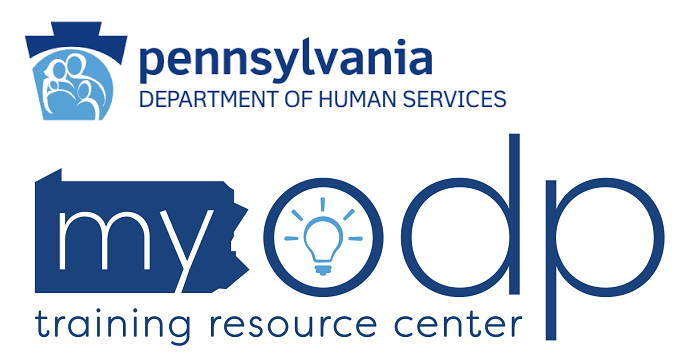Positive Approaches Journal, Volume 9, Issue 3
Schock | 34-39

Volume 9 ► Issue 3 ► 2020
Narrative-Based Data Visualizations: How Context Is Key in Making Data Accessible and Actionable
Tim Schock
Improving data literacy and data accessibility is a central mission of the Pennsylvania State Data Center (PASDC). Institutions and organizations across the state rely more heavily on data for decision-making; and the amount and complexity of data available has increased dramatically. PASDC has been at the forefront of utilizing modern data visualization techniques and technologies to improve data accessibility and data literacy.
As part of the Institute of State and Regional Affairs at Penn State Harrisburg, PASDC is part of an initiative to reduce stigma surrounding opioid use disorder (OUD) across Pennsylvania. The Douglas W. Pollock Center for Addiction Outreach and Research at Penn State Harrisburg is leading the project, while the Pennsylvania Department of Drug and Alcohol Programs (DDAP) is providing funding and additional oversight. Two national public health non-profits, Shatterproof and The Public Good Projects, are leading public information campaigns to support the goal of OUD stigma reduction.
A primary goal of this stigma reduction campaign is to educate community-based organizations (CBOs), policy makers, healthcare professionals, and community members on why addiction should be treated as a medical illness. As part of this objective, the Institute of State and Regional Affairs, comprised of the Pennsylvania State Data Center (PASDC) and the Center for Survey Research (CSR), is working with experts at Penn State Harrisburg and DDAP to identify relevant primary and secondary data indicators that would detect and measure the impact of stigma in the treatment and intervention efforts of the state relating to OUD.
The primary data, collected by CSR, includes in-depth interviews with CBOs who work with and treat individuals with OUD and a statewide baseline survey to gauge OUD stigma among the public. The secondary data indicators, collected by PASDC, include administrative data, some publicly available through Pennsylvania’s OpenDataPA initiative (data.pa.gov) and others through a data-sharing agreement between PASDC and various state agencies. Data available on the OpenDataPA site is especially convenient, as the site provides an application programming interface (API) access for datasets, allowing PASDC to connect internal data stores to these APIs, ensuring that the data driving the visualizations are up to date.
PASDC has a history of developing digital dashboards for a variety of uses and clients. PASDC has identified two main limitations of dashboards in that (1) they sometimes fail to provide context necessary to understand the data, and (2) they often fail
to communicate relevant trends. In the age of information, countless data dashboards exist on websites with little to no context. With little to no guidance, the reader must interpret the significance of the data and the main takeaways on their own.
This is not a significant burden for experts but may be overwhelming for the average user. Because the intended audience has varying degrees of data literacy, PASDC felt it was necessary to address the limitations of stand-alone dashboards.
To address these limitations, PASDC has transitioned to interactive data-driven narratives. PASDC leveraged Esri ArcGIS StoryMaps to build these data narratives with interactive charts. This format provides the end user with (1) the purpose behind the project and the selection of the indicator, (2) how to use and interact with the data visualization and important notes about the data or visualization, and (3) a summary or overview of key trends present in the data for the end user to investigate. The data visualizations were created using ArcGIS Online and Tableau Public, and both of these services are free for non-commercial use; although to get the fullest level of functionality, PASDC uses paid versions of these services, including ArcGIS Enterprise and Tableau Desktop.
CAPTION: Below is just one of five narratives being developed to address stigma using data indicators identified by Penn State and DDAP. This narrative form combines relevant literature as well as primary and secondary data to identify ways that stigma may impact treatment and intervention efforts among Pennsylvania’s first responders.1
This format has been tested a few times by PASDC in monthly reports disseminated as part of the State Data Center mission – PASDC is Pennsylvania’s official liaison to the U.S. Census Bureau, and as such is tasked with improving outreach and understanding
of the Census and it’s data among Pennsylvanians. Overall, PASDC’s audiences have greatly enjoyed the added functionality of interactive data narratives. Engagement on interactive reports is generally higher, and these items get more media attention.
The narratives developed in partnership with our colleagues at CSR, Penn State Harrisburg, and DDAP also provide a more holistic understanding of the data, combining academic literature, content expertise, and primary and secondary data to craft a
more engaging and informative narrative.
In a time where “big data” rules the world, analysis and context are critical in converting data into information and knowledge. PASDC’s internal cultural shift toward a narrative-focused data literacy will supplement data visuals with context and meaning, offering clarity to each user regardless of their ability to interpret data. As data becomes more meaningful to the average Pennsylvanian’s life, PASDC is committed to creating accessible data narratives that engage, inform, and increase data literacy among all users, regardless of their background.
Mailing List
Email pasdc@psu.edu to sign up for the Pennsylvania State Data Center Mailing List.
References
- Institute of State and Regional Affairs. Opioid and substance use stigma among Pennsylvania’s first responders. ArcGIS StoryMaps website. https://storymaps.arcgis.com/stories/a4a4baad89d946a8b783966315f2f4ed. Published September 25, 2020. Accessed October 30, 2020.
Biography Tim Schock is a data
analyst at the Pennsylvania State Data Center (PASDC). In his position at
PASDC, Tim utilizes ArcGIS, SQL, R, Python, Tableau, and more to provide data
management and data visualization on various projects with PASDC’s partners in
state government, higher education, and non-profit organizations. Tim also
coordinates PASDC’s data dissemination efforts including a mailing list with
monthly reports. Tim graduated from Shippensburg University with degrees in
Sociology (B.A.) and Geoenvironmental Studies (M.S.). In his free time, Tim
enjoys reading, board games, and exploring Pennsylvania’s farmers markets. Contact Information Tim Schock, Data Analyst Pennsylvania State Data
Center Institute of State and
Regional Affairs Penn State Harrisburg




